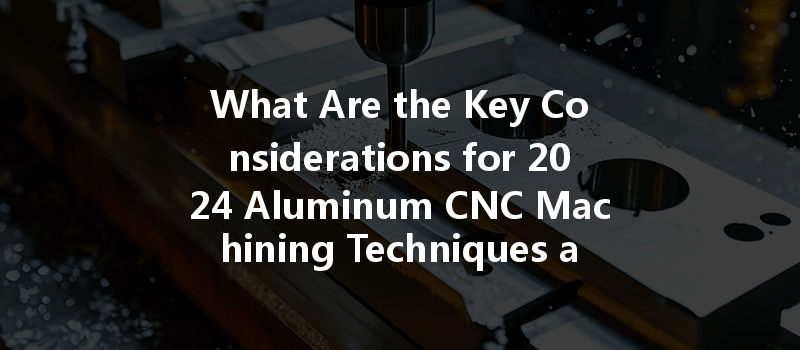Did you know that the global CNC machining market is projected to reach approximately $100 billion by 2025? This staggering growth is primarily driven by the increasing demand for precision manufacturing across various industries, including aerospace, automotive, and consumer electronics. As we approach 2024, organizations engaged in aluminum CNC machining must stay informed and adapt their practices to meet evolving industry standards, technological advancements, and sustainability requirements.
Aluminum CNC machining offers numerous benefits, including lightweight properties, excellent corrosion resistance, and high thermal conductivity. However, to leverage these advantages fully, manufacturers must pay careful attention to several key considerations. In this blog, we’ll delve deep into the essential factors that stakeholders should prioritize in 2024 to enhance their aluminum machining processes effectively while ensuring sustainability and compliance with industry regulations.
Before diving into CNC machining practices, it is crucial to have a fundamental understanding of aluminum alloys and their unique properties.
1.1 Types of Aluminum Alloys
Aluminum can be categorized broadly into two groups: wrought and cast alloys. Each has different properties and machining characteristics:
1.2 Key Properties
To efficiently produce high-quality aluminum parts, it’s essential to keep up with technological advancements in CNC machining.
2.1 Innovative Machinery and Tools
Recent innovations in CNC machines, including multi-axis machining and automation, have transformed how aluminum parts are manufactured. These advancements allow manufacturers to produce more complex geometries and achieve higher precision levels.
2.2 Software Solutions
Advanced CAM (Computer-Aided Manufacturing) software has become vital in optimizing machining processes. These tools can simulate machining operations, thereby allowing manufacturers to:
Cutting parameters significantly influence machining efficiency, surface finish, and tool life. Understanding how to optimize these parameters is crucial for successful aluminum CNC machining.
3.1 Cutting Speed, Feed Rate, and Depth of Cut
Selecting the right cutting speed, feed rate, and depth of cut can lead to better surface finishes and tool longevity.
3.2 Tool Selection
Choosing the correct tooling also contributes to machining efficiency. Popular tool options for aluminum CNC machining are:

Dimensional accuracy is critical in aluminum CNC machining, particularly for industries that demand tight tolerances.
4.1 Importance of Tolerances
Manufacturers need to define tolerances clearly. Inaccurate dimensions can lead to costly errors and product failure.
4.2 Measuring Tools and Techniques
Modern CNC machining facilities utilize various measurement tools to ensure quality. Commonly used tools include:
The surface finish of machined parts is essential for aesthetic and functional purposes.
5.1 Industry Standards and Specifications
Specific industries have distinct surface finish requirements. For example, aerospace components often demand higher finish grades due to performance and safety factors.
5.2 Techniques for Achieving Desired Finish
Several techniques can achieve impeccable surface finishes, such as:
As global awareness about environmental issues increases, manufacturers must ensure compliance with regulations such as RoHS (Restriction of Hazardous Substances) and REACH (Registration, Evaluation, Authorization, and Restriction of Chemicals).
6.1 Understanding Environmental Regulations
Manufacturers need to be aware of restricted substances and ensure that the materials they use comply with both local and international standards.
6.2 Implementing Sustainable Practices
Sustainability should be integrated into machining practices. Some ways to achieve this include:
As machining technology advances, continuous training of the workforce becomes increasingly vital.
7.1 Skill Development
Investing in employee training programs that keep pace with technological changes ensures that organizations can maintain high-quality production.
7.2 Cross-Training
Fostering a versatile workforce capable of operating multiple machines and processes can enhance flexibility and productivity.
As the CNC machining industry evolves, understanding the critical considerations impacting aluminum machining in 2024 is fundamental for success. From comprehending aluminum alloy properties and embracing technological advancements to optimizing cutting parameters and ensuring environmental compliance, attention to detail in every step is paramount.
Manufacturers who adapt to these changes not only boost their operational efficiency but also position themselves favorably in a competitive market. Staying aware of these developments allows businesses to remain relevant and innovative, ultimately meeting customer needs and expectations.
Reflect on the insights shared in this blog as you navigate the complexities of CNC machining. By considering these factors, you are not only investing in the success of your projects but also contributing to the future of sustainable manufacturing practices. As we advance further into 2024, the importance of being proactive and knowledgeable in CNC machining cannot be overstated. Your ability to innovate and adapt will measure your success in this ever-changing landscape.






